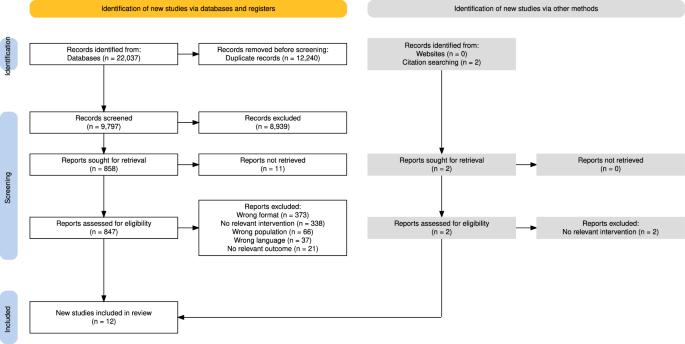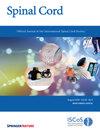Self-managed digital technologies for pressure injury prevention in individuals with spinal cord injury: a systematic scoping review
IF 2.2
4区 医学
Q3 CLINICAL NEUROLOGY
引用次数: 0
Abstract
Systematic scoping review. Pressure injuries (PI) are a serious but mostly preventable complication associated with living with spinal cord injuries (SCI). This review aims to identify and summarize evidence concerning self-managed digital technologies for preventing PI in the SCI population. A systematic search was performed across seven databases—Embase, Medline, PsycInfo, Web of Science, Scopus, CENTRAL, and CINAHL. To be eligible, studies had to be peer-reviewed and report original findings on self-managed digital technologies for PI prevention in adults (≥18 years) with SCI. Supplementary searches were conducted using Google Scholar, PEDro, and citation tracking to locate relevant studies not identified by the systematic search. Data from the included studies were extracted and synthesized. The systematic search identified 9797 unique studies. After screening and excluding 8939 records at the title-and-abstract level, 858 full-text records were assessed, and 12 met the inclusion criteria. The included studies fell into categories: (i) technology-driven feedback systems that provide real-time pressure distribution data and (ii) digital self-management and educational systems aimed at improving adherence to PI-preventive measures. Feedback systems were associated with improved pressure-relieving behaviours, though adherence to reminder-based interventions remained a challenge. Digital self-management tools were shown to enhance knowledge and confidence related to PI prevention. Self-managed digital technologies increased awareness, confidence, and engagement in pressure relief behaviours among individuals with SCI. However, their direct impact on PI prevention remains inconclusive. Difficulties relating to adherence indicate that such technologies should complement, rather than replace, traditional prevention strategies.

自我管理的数字技术预防脊髓损伤个体的压力损伤:一个系统的范围审查。
研究设计:系统的范围评估。目的:压迫性损伤(PI)是一种严重但大多可预防的与脊髓损伤(SCI)相关的并发症。本综述旨在识别和总结有关自我管理数字技术在SCI人群中预防PI的证据。方法:在embase、Medline、PsycInfo、Web of Science、Scopus、CENTRAL和CINAHL 7个数据库中进行系统检索。为了符合资格,研究必须经过同行评审,并报告SCI成人(≥18岁)自我管理数字技术预防PI的原始发现。使用谷歌Scholar、PEDro和引文跟踪进行补充检索,以定位未被系统检索识别的相关研究。从纳入的研究中提取并合成数据。结果:系统检索发现9797个独特的研究。在标题和摘要水平筛选并排除8939条记录后,评估了858条全文记录,其中12条符合纳入标准。纳入的研究分为以下几类:(i)提供实时压力分布数据的技术驱动的反馈系统;(ii)旨在提高遵守pi预防措施的数字自我管理和教育系统。反馈系统与改善的减压行为有关,尽管坚持以提醒为基础的干预措施仍然是一个挑战。数字自我管理工具被证明可以增强与PI预防相关的知识和信心。结论:自我管理的数字技术提高了SCI患者减压行为的意识、信心和参与度。然而,它们对预防PI的直接影响仍不确定。与坚持有关的困难表明,这些技术应该补充而不是取代传统的预防战略。
本文章由计算机程序翻译,如有差异,请以英文原文为准。
求助全文
约1分钟内获得全文
求助全文
来源期刊

Spinal cord
医学-临床神经学
CiteScore
4.50
自引率
9.10%
发文量
142
审稿时长
2 months
期刊介绍:
Spinal Cord is a specialised, international journal that has been publishing spinal cord related manuscripts since 1963. It appears monthly, online and in print, and accepts contributions on spinal cord anatomy, physiology, management of injury and disease, and the quality of life and life circumstances of people with a spinal cord injury. Spinal Cord is multi-disciplinary and publishes contributions across the entire spectrum of research ranging from basic science to applied clinical research. It focuses on high quality original research, systematic reviews and narrative reviews.
Spinal Cord''s sister journal Spinal Cord Series and Cases: Clinical Management in Spinal Cord Disorders publishes high quality case reports, small case series, pilot and retrospective studies perspectives, Pulse survey articles, Point-couterpoint articles, correspondences and book reviews. It specialises in material that addresses all aspects of life for persons with spinal cord injuries or disorders. For more information, please see the aims and scope of Spinal Cord Series and Cases.
 求助内容:
求助内容: 应助结果提醒方式:
应助结果提醒方式:


